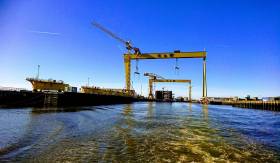Displaying items by tag: Fred Olsen Group
The Belfast shipyard at Harland and Wolff could go bust within days as fears mount over its future, it has emerged.
Unions and sources familiar with ongoing negotiations at the shipyard, reports Belfast Telegraph, have said that the company could "go to the wall" next Wednesday, if a buyer cannot be found.
Around 132 people are understood to be still employed at the operation, which was put up for sale by its Norwegian parent company Fred Olsen Energy in December 2018. The group, now known as Dolphin Drilling ASA, filed for bankruptcy last month.
Talks involving political leaders, economic development agency Invest NI and shipyard management have taken place throughout the week.
It's understood that Newry-based MJM Marine had held the status of an exclusive bidder. Jonathan Guest, who replaced Robert Cooper as chief executive of Harland and Wolff in April 2018, is a former managing director of MJM Marine.
During 2018, MJM used Harland and Wolff's dry dock for carrying out a major cruise contract with Royal Caribbean Cruise Ltd.
For more click here from the story.





























































